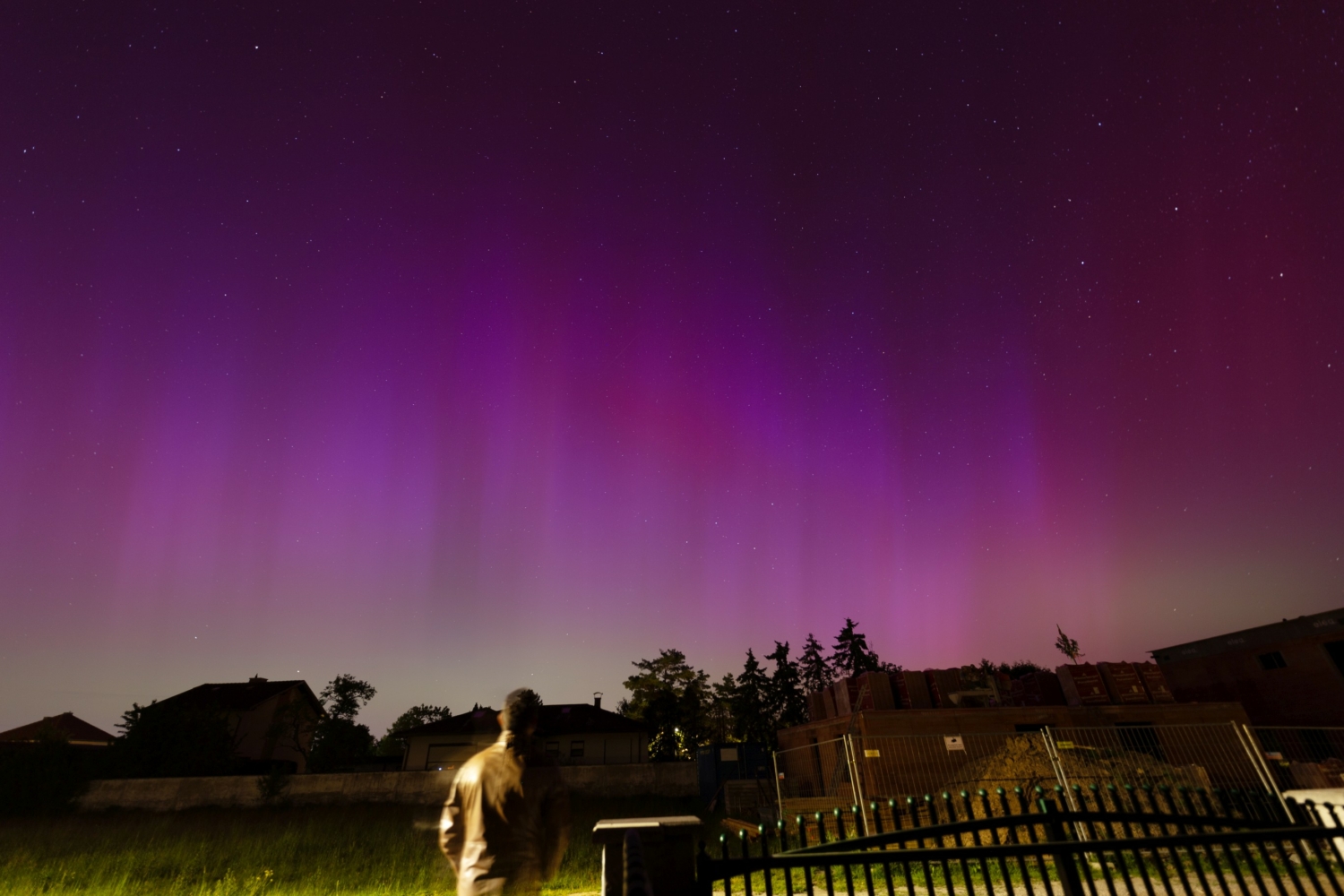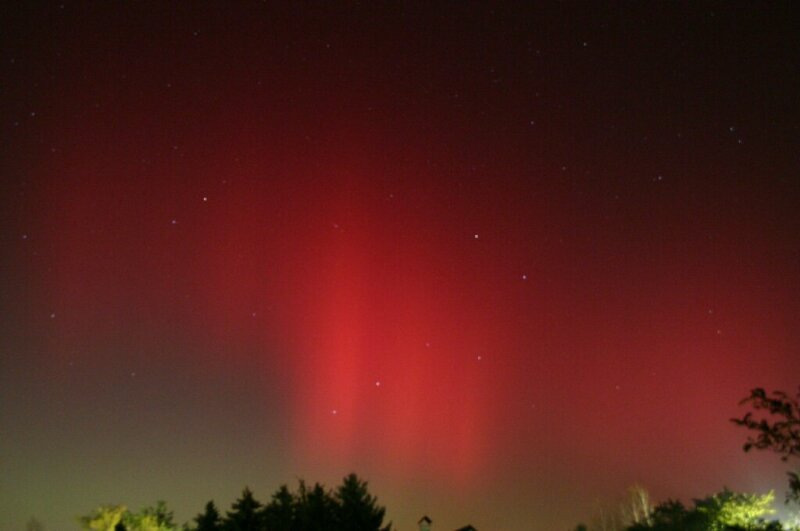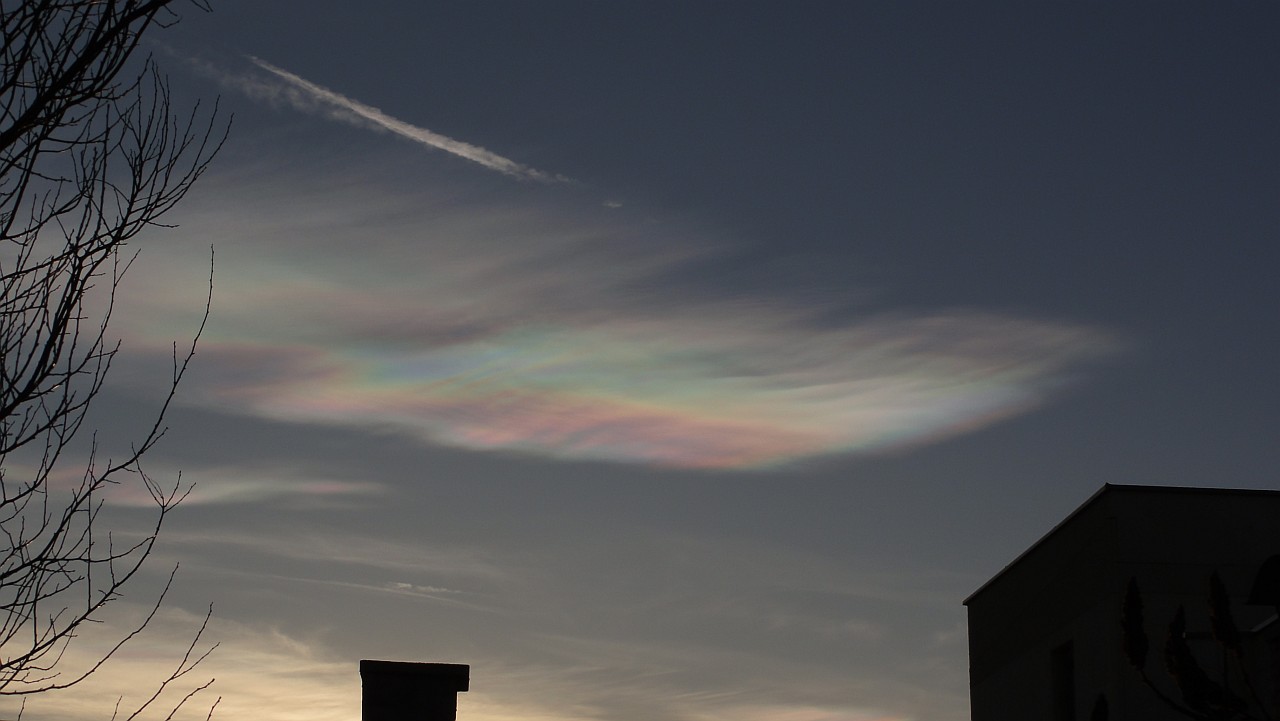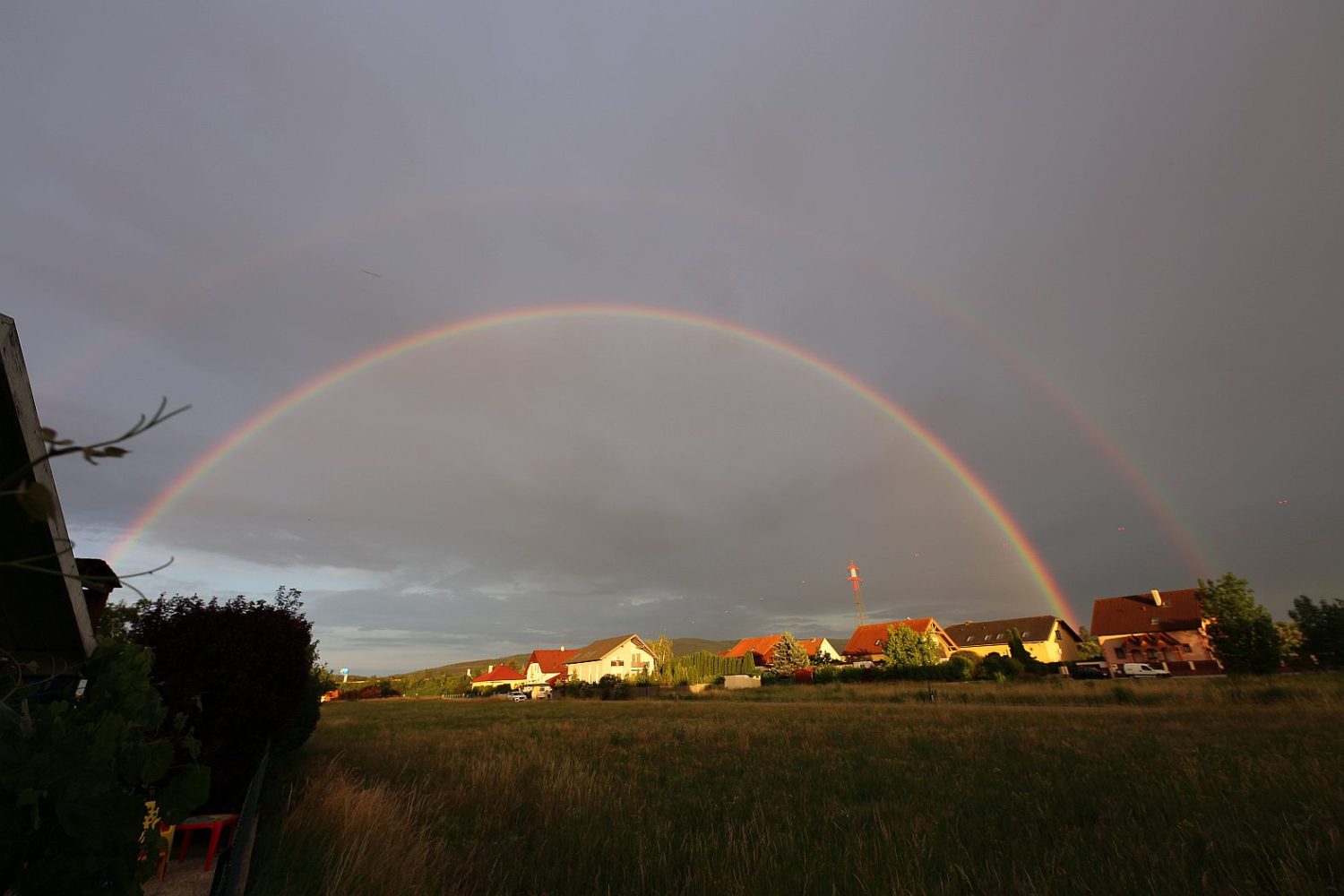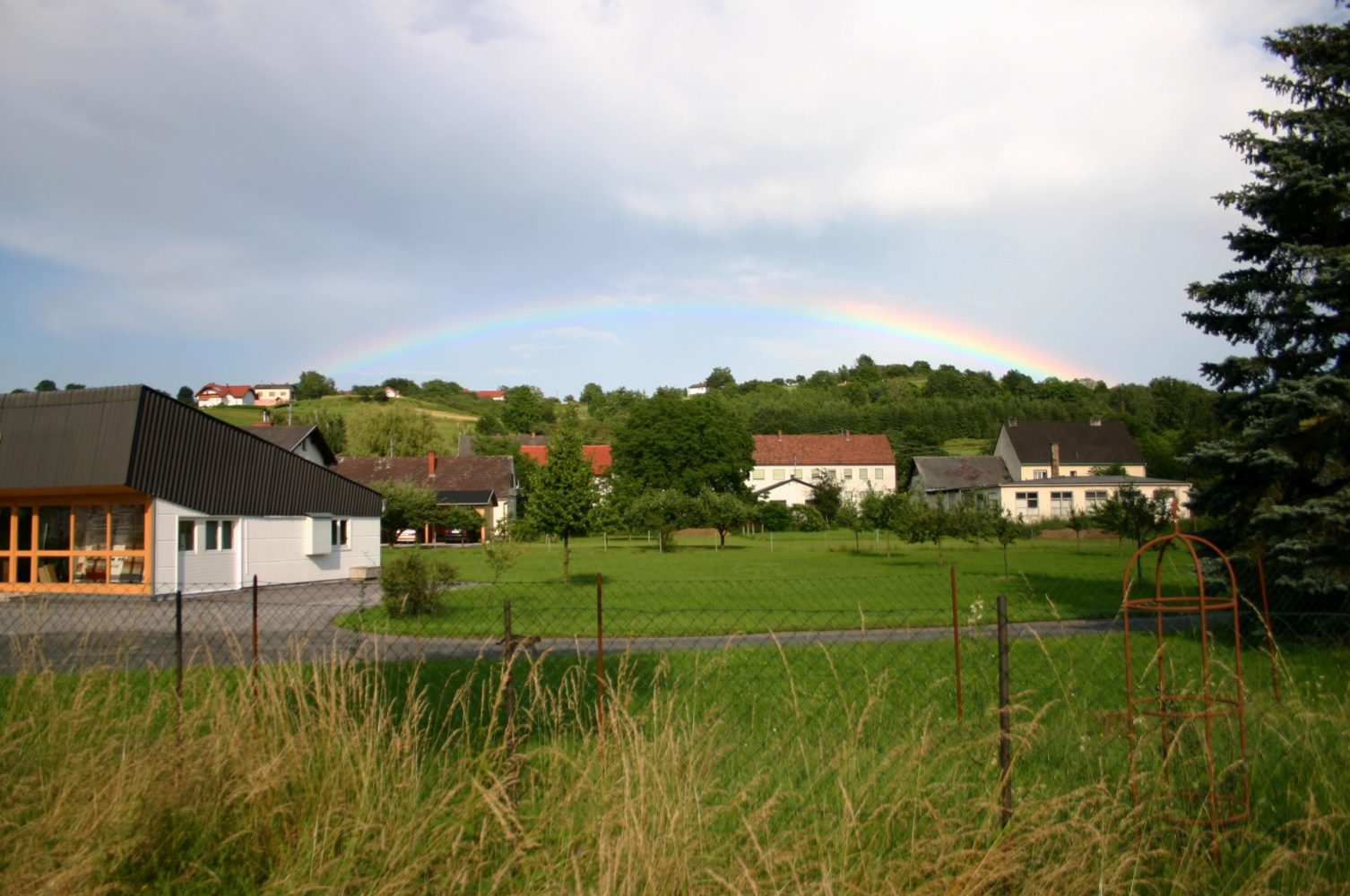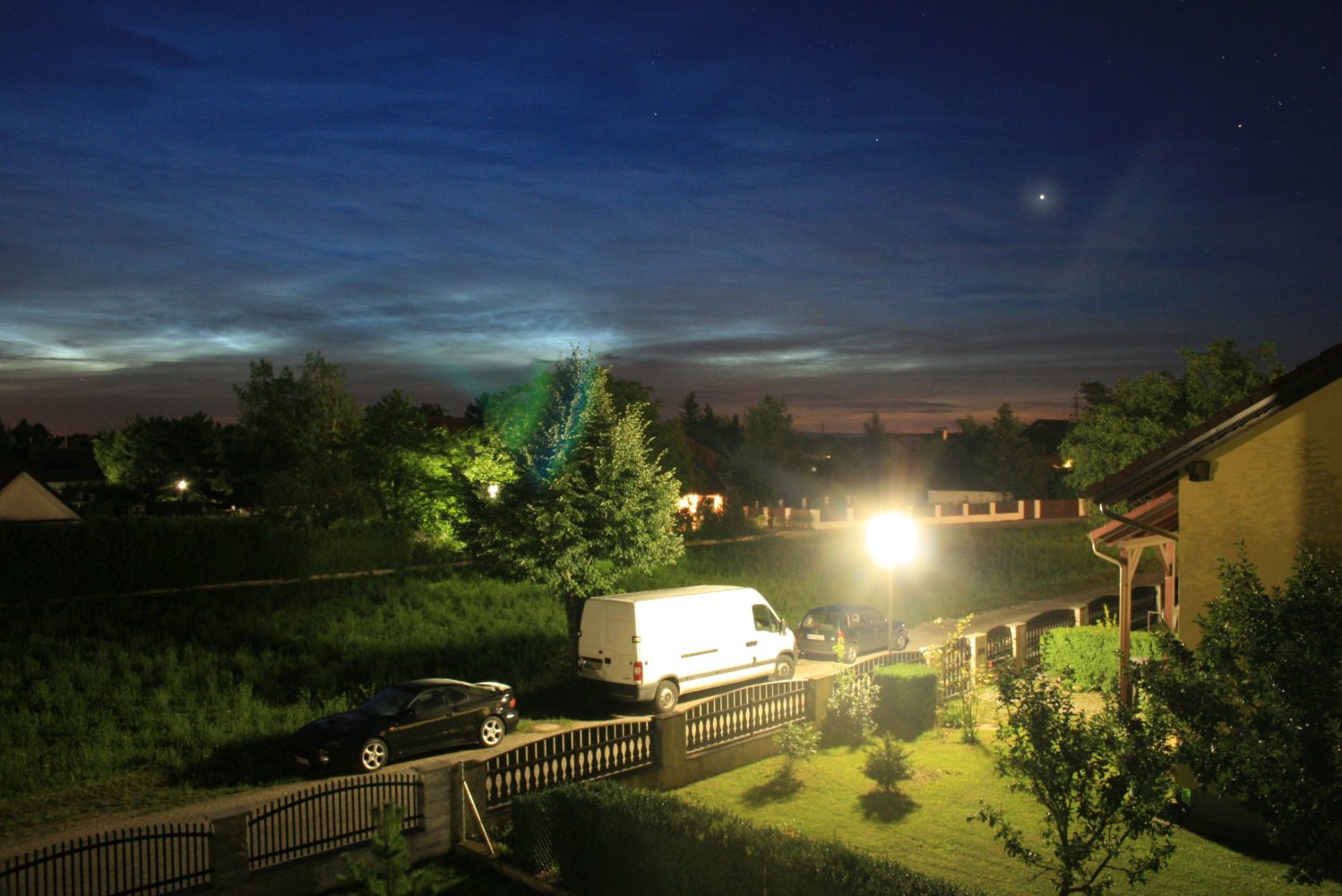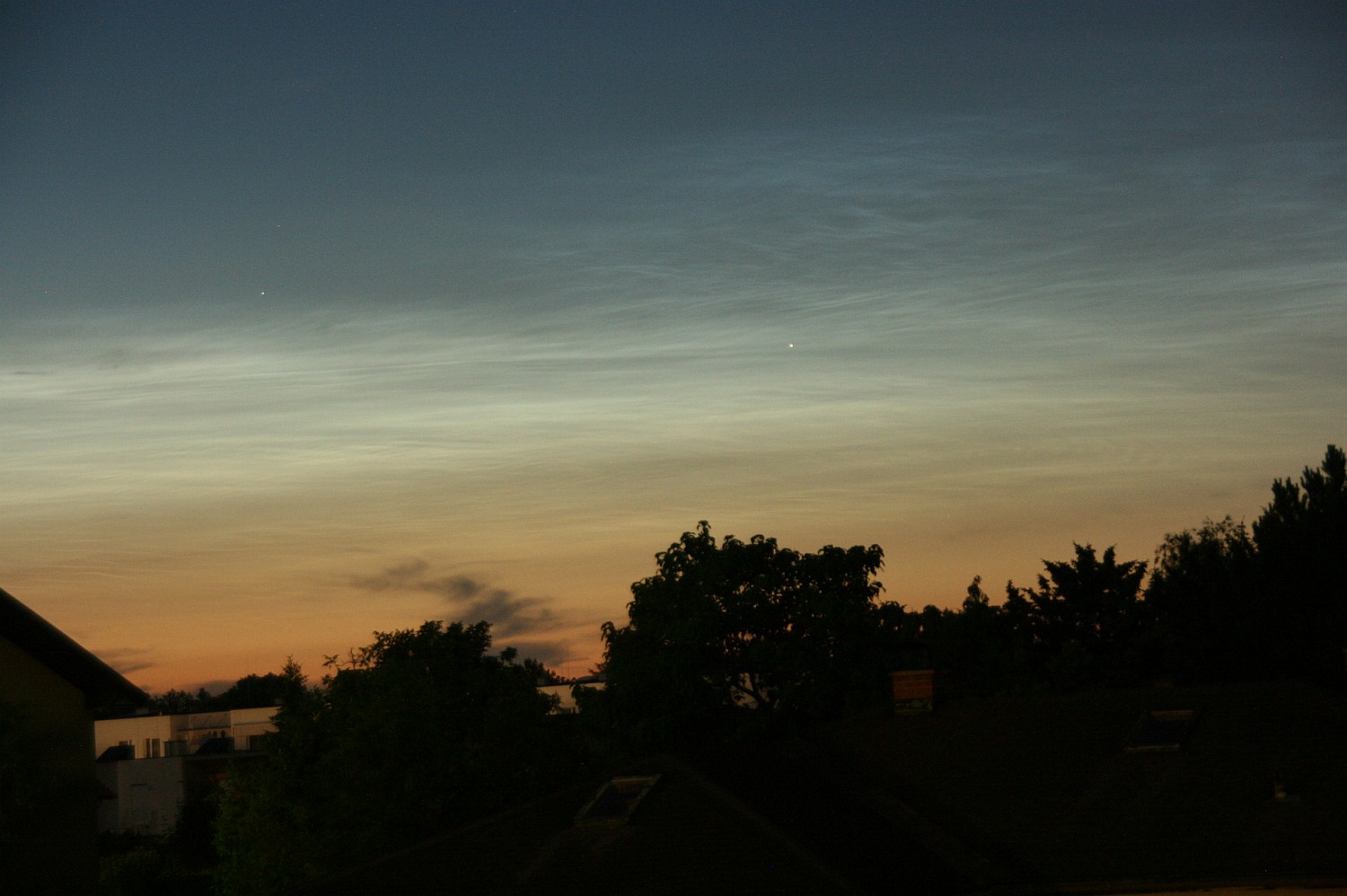Aurorae
Aurorae or polar lights are natural light displays in the night sky, typically in the ionosphere. Aurorae are produced by the collision of charged particles (solar wind) from the Earth’s magnetosphere. Temporarily, when a strong magnetic storm arises, these phenomena can also be seen in temperate (northern) latitudes.
Halos
Halos are optical light phenomena that appear near strong light sources like the Sun or Moon. Atmospheric phenomena such as rainbows and parhelia are wellknown effects.
Rainbows
Noctilucent clouds (NLC)
Night clouds or noctilucent clouds are tenuous cloud-like phenomena that are the “ragged-edge” of a much brighter and pervasive polar cloud layer called polar mesospheric clouds in the upper atmosphere, visible in a deep twilight. They are made of crystals of water ice. They are most commonly observed in the summer months at latitudes between 50° and 70° north and south of the equator. They can only be observed when the Sun is below the horizon.
